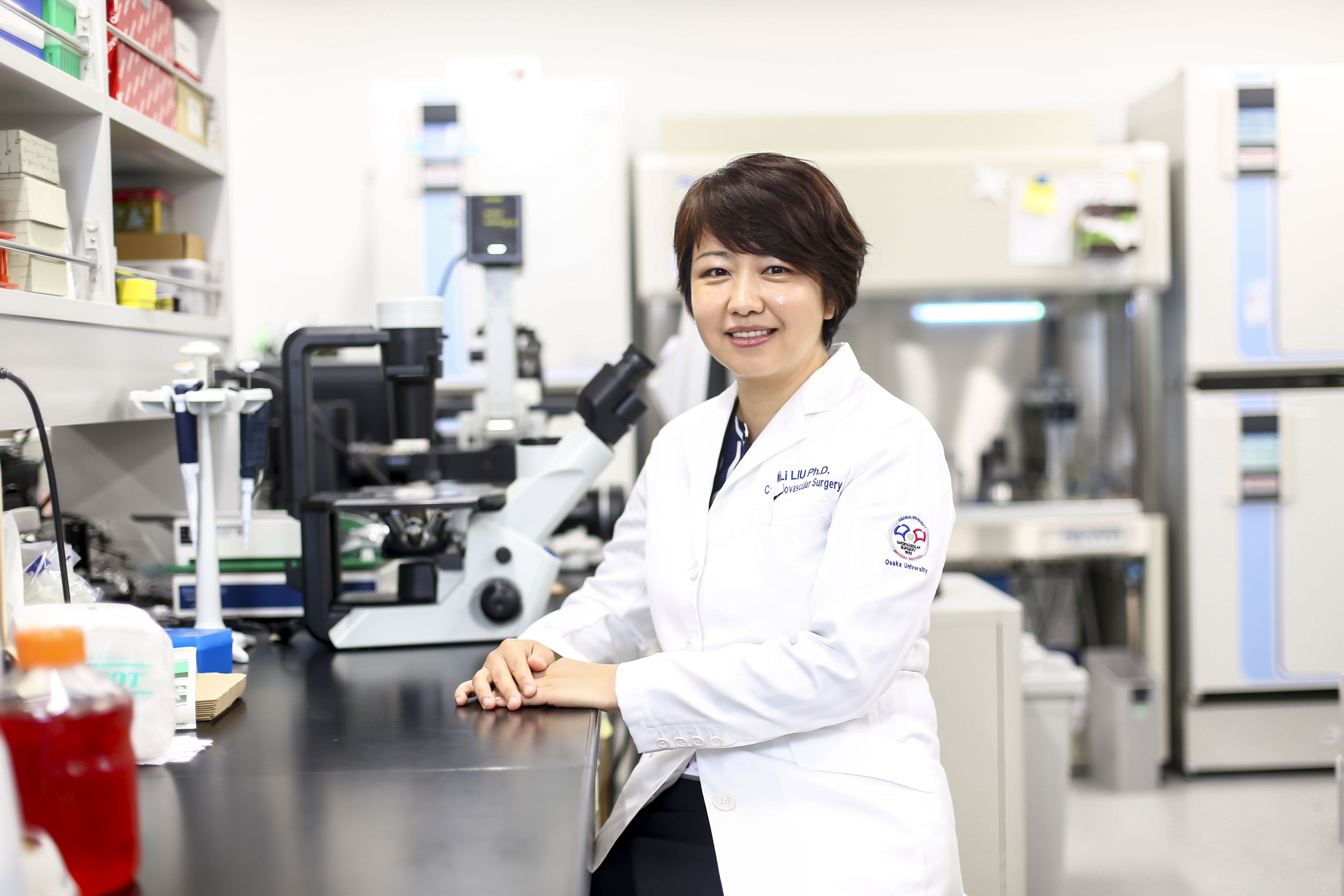
Dr. Li Liu, Associate Professor, Department of Cardiovascular Surgery, Graduate School of Medicine
"Switching Gears to Save Lives: From Aspiring Young Doctor to Groundbreaking Medical Researcher"

There's more to medicine than just practice
Dr. Liu came to Japan 21 years ago in 1998 after graduating from the medical department of Jilin university in China’s Jilin Province. With a strong affinity for foreign countries since she was a child, Dr. Liu wanted to see the world and everything it had in store for her. After coming to Japan, Dr. Liu entered the Graduate School of Medicine at Tokushima University with the intent of becoming a doctor, but acquiring a Japanese medical license as a foreigner at the time was easier said than done, so Dr. Liu decided to abandon her dreams of becoming a doctor. Instead, she decided to seek a way to cure patients not through medical practice, but through her medical research.
During her doctoral course at Tokushima University, Dr. Liu met and married her husband, gave birth, and later moved to Kyoto University with her husband. At Kyoto University, Dr. Liu researched iPS cells for transplantation purposes at the Institute for Integrated Cell-Material Sciences, WPI Research Center, of which Nobel laureate Professor Shinya Yamanaka had previously been a member.
Dr. Liu says, “What eventually let me to move from Kyoto University to Osaka University was collaborative research with Professor Yoshiki Sawa of the Graduate School of Medicine under a national research project. Once basic research had successfully concluded, we felt that we should carry out clinical trials in the next phase of our research, so I moved to Osaka University in November 2017 in order to more smoothly promote clinical research.”

Providing doctors with the tools to fight disease from the forefront of cell research
Dr. Liu’s research primarily deals with the development of new tools and methodologies for applications in stem cell studies based on microfluidic and nanofabrication technologies. In particular, her main focus has been creating in vitro cellular microenvironments, which have been shown to play a role in regulating cellular functions in vivo (i.e., human pluripotent stem cells (hPSCs), hPSCs-derived cardiomyocytes). Indeed, the methods she and her team have developed allow for the establishment of well-defined artificial regulatory cellular environments at nm~µm scales. Utilizing these artificial environments will lead to an understanding of cellular environmental cues in detail and allow for precise control of cellular functions. Such new methodological developments will lead Dr. Liu and her team to prepare stem cells for future applications in drug screening, cell-based therapy, and regenerative medicine.
Realizing her dream through proactive research collaboration at OU
Dr. Liu is grateful that Osaka University is actively engaged in joint research and industry-academia collaboration with companies, while also providing proactive administrative support for initiatives for commercialization. “These give me hope that I can realize my dream of connecting my results directly to clinical practice,” says Dr. Liu. She continues, “Currently, I am promoting fusion research with medicine, engineering, and optics within the university, and I’m sure that there are many researchers who are active in research collaboration with different fields at Osaka University.”
Internationalization, diversity, and work-life balance in Japan
Dr. Liu points out that the Department of Cardiac Surgery at Osaka University has more women when compared with other universities in Japan, but men are still the majority among doctors as a whole. Dr. Liu says, “The other day, we had a meeting with about 50 people in which corporate representatives also participated, but I was both the only woman and the only foreigner in attendance.” According to Dr. Liu, in China, the male-female ratio of doctors is about 50:50, and there are no gender differences in working hours and assessments. It is common in China to raise children with the help of parents from both families.
“Since I live in Japan and can’t easily get support from my parents, I always try to spend my time efficiently and balance my work life and my private life. My desire to be a mother at home may cost me some job opportunities, but I realize that certain sacrifices must be made in order to maintain a good work-life balance in this day and age.”
Finally, Dr. Liu adds, “I am very grateful for the support of the people around me, not the least of which are my colleagues and staff at Osaka University”.

Text: Junko Kimura/Edit: Christopher Bubb